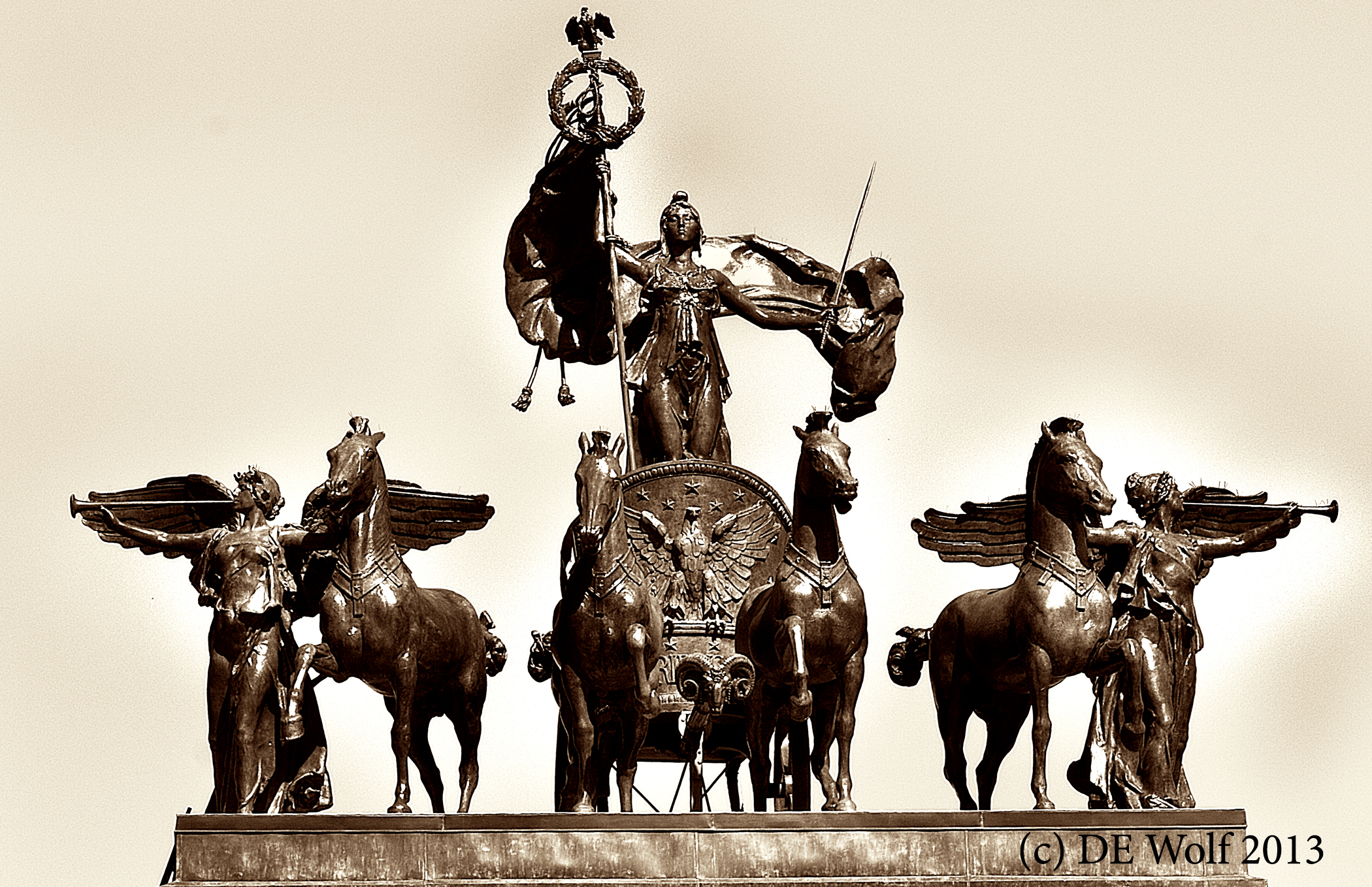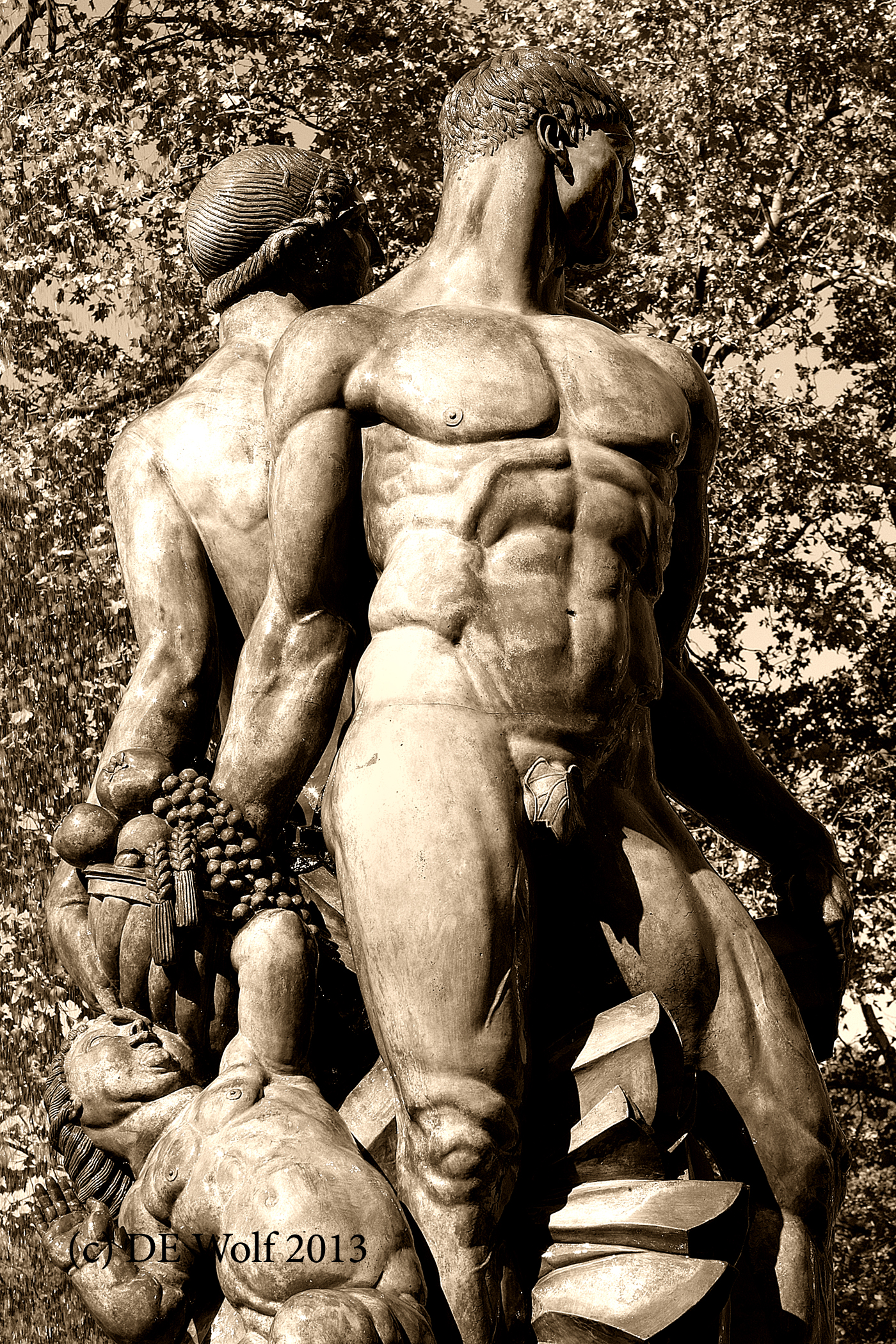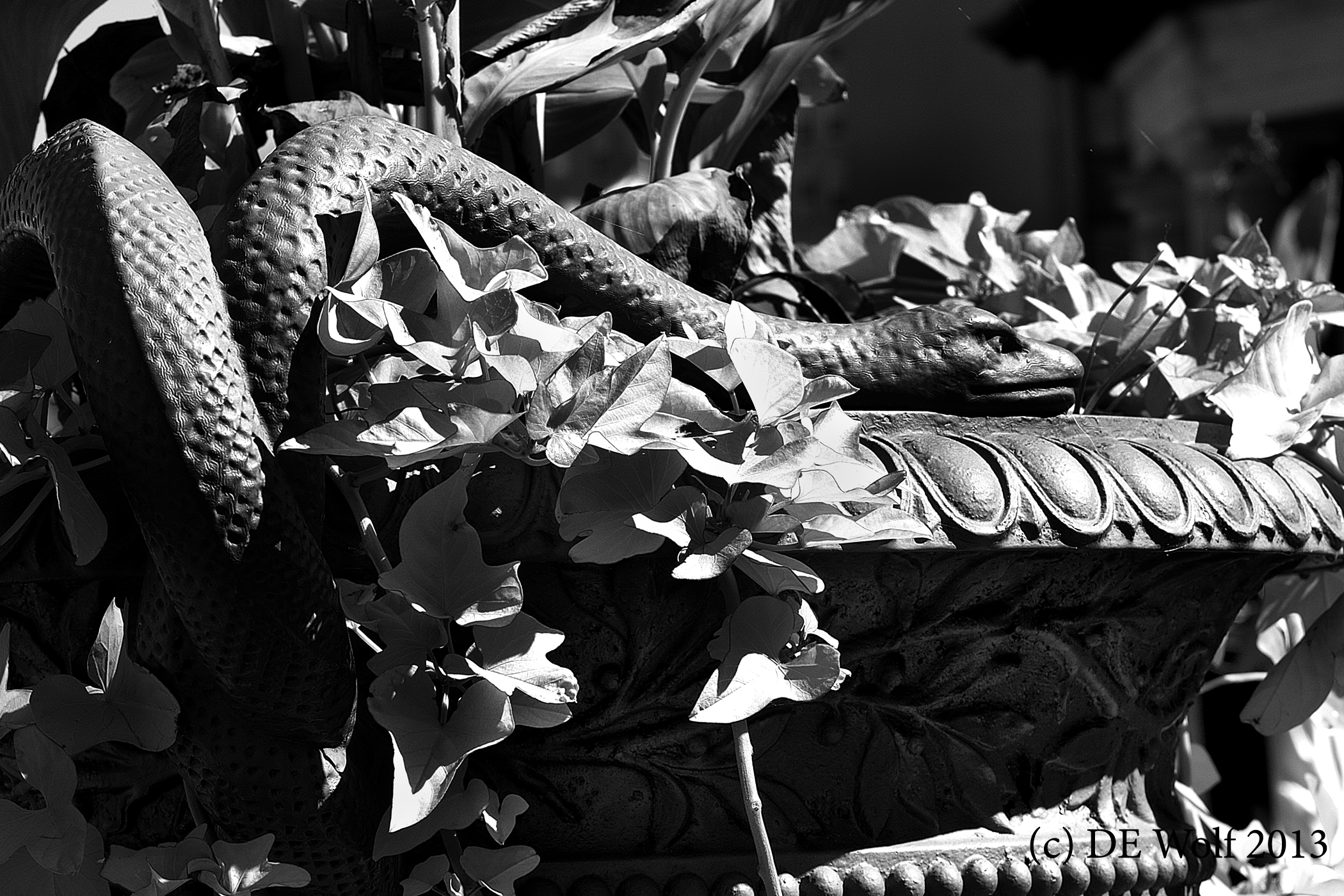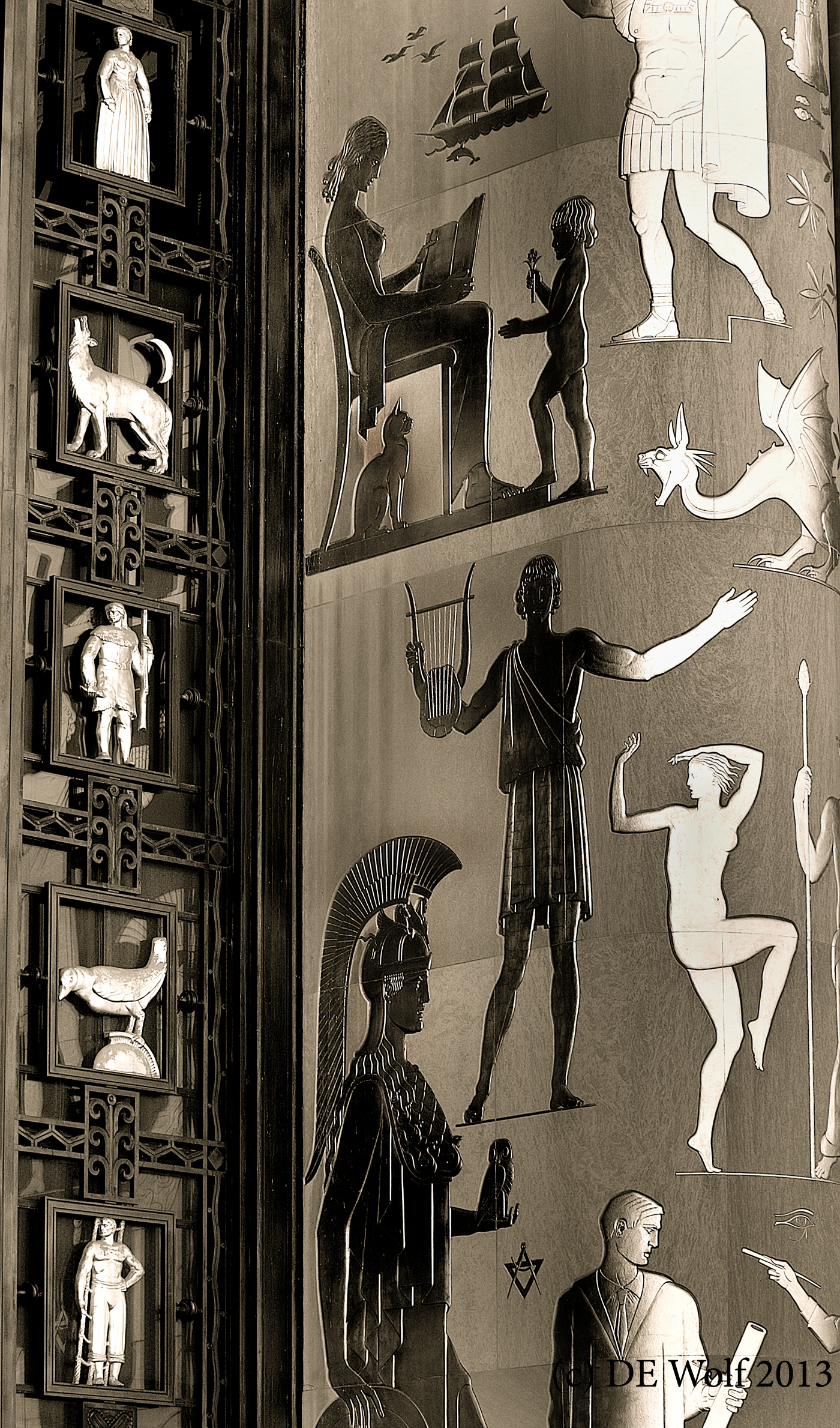
Figure 1 – Columbia and the victories atop the triumphal arch at Brooklyn’s Grand Army Plaza, (c) DE Wolf 2013.
When I was in college, Brooklyn, NY was seriously on the wane. It was the Brooklyn of Thomas Wolfe’s short story, “Only the Dead Know Brooklyn,” a place obscure, whose time seemed past, yet was full of a kind of vibrancy that was reflected best in its ethnicity. I remember thinking however, about all the past glory that was so evident in its parks, public edifices, and brownstones. And I would palpably wish that somehow time could be reversed and Brooklyn restored to its former glory. Well, today in a sense time has been reversed. It’s wonderful to find this somewhere other than in physics. Brooklyn has undergone and is continuing to undergo a wonderful metamorphosis. The fact raises, even in the most cynical, one’s recognition of the important point that cities are meant to be lived in, and that it is not, a priori, a fact that they should be unmanageable. The Brooklyn of today is an exciting amalgam, which is really what it was meant to be.

Figure 2 – Detail of Eugene Francis Savage’s Neptune, the Grand Army Plaza, Brooklyn, NY, (c) DE Wolf 2013.
My only regret, and I suspect that this is a minority opinion is that the Barclay’s Center never achieved the grand schemes that Frank Gehry originally envisioned for it. I find that a major disappointment. If in search of grandeur one has to return to the old magnificent Brooklyn. Happily it is still there, with new life breathed into it.

Figure 3 – Detail from Eugene Francis Savage’s Bailey Fountain, Felicity and Wisdon, (c) DE Wolf 2013.
And as always, the epicenter of all of this has to be The Grand Army Plaza. For photographers it has to be a Mecca. The term Grand Army can mean only one thing and this is emblazened on the top of the Soldiers’ and Sailors’ triumphal arch beneath Frederick MacMonnies Quadriga: “Defenders of the Union 1861-1865.” The Quadriga depicts the lady Columbia, an allegorical representation of the United States, riding in a chariot drawn by two horses, while two winged Victory figures, each leading a horse, trumpets Columbia’s arrival. Just marvelous!
The Grand Army Plaza is the dramatic main entrance to Olmstead and Vaux’s Prospect Park. The Plaza consists very dramatically, albeit somewhat at the pedestrian’s peril (particularly one whose mind strays away from traffic to the perfect photograph), of concentric oval rings arranged as streets. The outer ring is Plaza Street. The inner ring was originally meant intended to be a circle is in fact Brooklyn’s major thoroughfare Flatbush Avenue. It connects radially eight roads: Vanderbilt Avenue; Butler Place; Saint John’s Place (twice); Lincoln Place; Eastern Parkway; Prospect Park West; Union Street; and Berkeley Place.
In addition to the Plaza and the Park are three of Brooklyn’s most impressive landmarks: The Brooklyn Botanic Garden, The main branch of the Brooklyn Public Library, and Brooklyn Museum. I think quite literally that I could spend many months photographing within a half mile of the Plaza. Needless-to-say one’s photographic wanderings are personal and a bit quirky. For me the goal is not to document the architecture but to photograph what the light strikes on a given day and therefore grabs your fancy.
For me the first focus is always philanthropist Frank Bailey’s (1865-1953) fabulous Neptune Fountain. It was built in 1932, a collaboration between by architect Edgerton Swarthout and sculptor Eugene Savage. The fountain, a dramatic sculptural waterwork includes central bronze sculptures of male and female figures atop the prow of a ship. These represent Wisdom and Felicity and are surrounded by Neptune himself, his attendant Triton, and a boy holding a cornucopia. To me personally the only material that compares to bronze in being photogenic is marble. And here you have the magic of bronze combined with water. What I really need to do is visit this fountain at different times of day to get different illuminations. Figure 2, an image of Neptune I have posted before and is one of my favorites. Figure 3 I took last weekend of Wisdom, Felicity, and the boy with the cornucopia. My only problem is that I would have preferred to get a face on image, but the lighting wasn’t right.
Poking further around the Plaza, I was very much taken by the snake garden planters that adorn the entrance of the park. One of them is shown in Figure 4. From there I climbed the library steps and photographed the art deco main entrance of the library (desisigned by sculptors Thomas Hudson Jones and Carl P. Jennewein. Take note: The bronze screen above the entrance features beloved characters from American literature.. Figure 5 catches a bit of the famous door with its golden literary figures. The ones shown in my picture top to bottoms are: Meg (from Little Women by Louisa May Alcott), White Fang (from the novel by Jack London), Natty Bumppo (from James Fenimore Cooper’s Leatherstocking Tales), The Raven (from the poem by Edgar Allan Poe), and Richard Henry Dana, Jr. (author and narrator of Two Years Before the Mast).
The Grand Army Plaza, Prospect Park, and the surrounding neighborhoods are fertile grounds for photographic discovery. And what you discover, I believe is an important connect or link between three Brooklyns: the Brooklyn of the gilded age, the Brooklyn of the art deco period, and the vibrant hipster-ethnic Brooklyn of today. Maybe Thomas Wolfe put it best, and maybe he had us photographers in mind when he said:
“Dere’s no guy livin’ dat knows Brooklyn t’roo an’ t’roo, because it’d take a guy a lifetime just to find his way aroun’ duh goddam town.”


